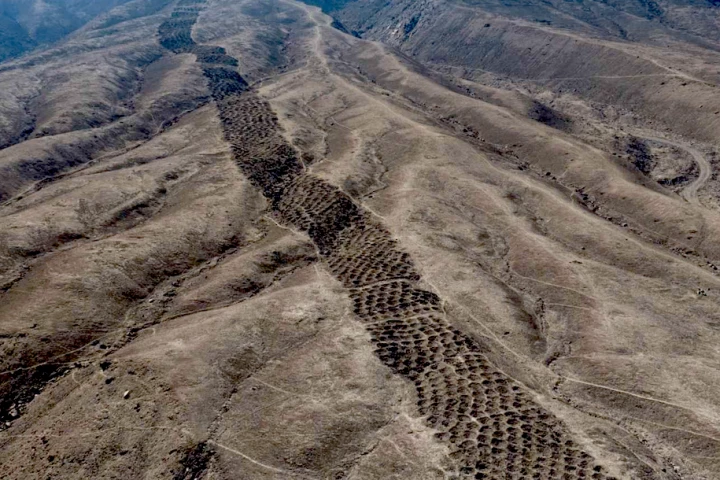In the quiet countryside of Zayas de Báscones, Spain, a subtle architectural form is beginning to take shape. Designed by Fran Silvestre Arquitectos, a new winery is set to become more than a place to make wine. When completed, the Bodegas Dominio d’Echauz winery will serve as an archive, a laboratory, and a sanctuary dedicated to protecting and studying endangered grape varieties.
Unlike many wineries that prioritize scale, this project takes a more restrained approach. Its planned curved white form will echo the layout of the surrounding vineyards, appearing as if it has emerged naturally from the land. But beneath that understated vision lies an innovative structure with important implications for both sustainable architecture and agricultural heritage.
The building is being constructed primarily from hempcrete blocks: a biocomposite made from hemp fibers, lime, and water. These will be laid to form two sweeping curved walls that enhance structural strength, while maintaining a soft visual aesthetic. A single-pitch metal roof will span the building, which will be coated entirely in Diathonite, a cork-based insulating mortar applied across walls, floors, and ceilings.

Together, these materials promise a seamless, cohesive feel. Their high thermal performance will help maintain stable interior temperatures; a critical factor for wine aging that reduces or even eliminates the need for mechanical systems.
The winery’s minimalist white palette and use of natural materials reflect Fran Silvestre’s wider architectural ethos. But in this case, those choices are not only aesthetic, they’re functional. The white cork render will reflect sunlight, helping to regulate the building’s temperature in Castile’s intense summer heat. Its low-slung form will reduce visual impact and blend into the topography. Even in its simplicity, the building is designed to make a quiet but powerful statement.
Inside, the winery will follow a clear and linear path: grapes arrive at one end, pass through fermentation tanks, and mature in oak barrels before being bottled. At several points, the layout expands to include areas for wine tasting, social gatherings, research, and storage.

These purposeful interventions reinforce the building’s deeper purpose. It is not a factory for wine; but a space for micro-vinification, where each small batch becomes a study in potential and preservation.
The project is being developed in partnership with Vitis Navarra, with a shared mission to protect grape varieties on the brink of extinction. This is less about producing volume and more about building a genetic repository. In a time of changing climate and evolving consumer tastes, these forgotten varietals may hold the key to the next chapter of viticulture.
The winery’s first wine collection will be named Basajaun, after a forest spirit from Basque mythology believed to guard nature’s secrets. It’s a fitting metaphor. Like its namesake, the winery will quietly protect ecosystems – genetic, cultural, and architectural – that are often overlooked.
When completed, this project will stand as a rare convergence of sustainable construction and agricultural stewardship. More than a winery, it will be a living archive, rooted in the past and growing toward the future.
Source: Fran Silvestre Arquitectos









